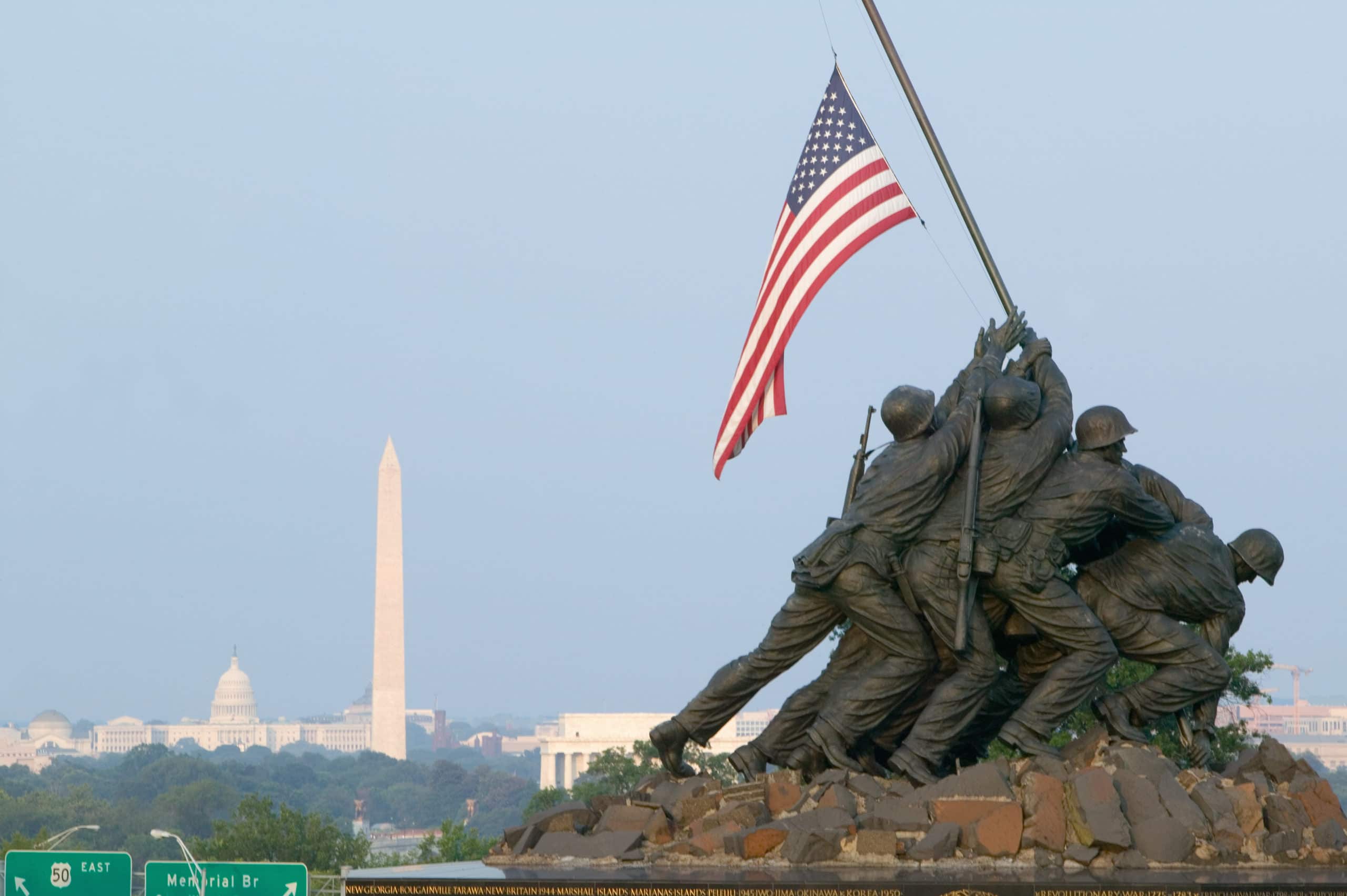December 15, 2020 | Defending Forward Monograph
“Endless Wars” and the Danger of Ignoring History
December 15, 2020 | Defending Forward Monograph
“Endless Wars” and the Danger of Ignoring History
“Ending endless wars” is the goal and mantra of many of those calling for Washington to withdraw troops from overseas deployments. It is an appealing notion. It also demonstrates stunning ignorance. History offers little evidence that protracted armed conflicts – so-called “endless” or “forever” wars – can be brought to a satisfactory conclusion by leaving one’s enemies to plot in safety and comfort. Should the U.S. government adopt such an approach, Americans must expect to be insufficiently protected in the present and more dangerously threatened in the future.
“The story of the human race is war,” Winston Churchill, a keen and lifelong student of history who had fought in four wars by age 25, concluded.1
In 1968, historians Will and Ariel Durant proved Churchill correct quantitatively. They calculated that there had been only 268 years free of war in the previous 3,421.2
In 1995, the eminent historian Donald Kagan concurred. In On the Origins of War and the Preservation of Peace, he wrote that “war has been a persistent part of human experience since before the birth of civilization.”3
Consider a few examples: The Persian-Roman wars were fought from 54 BCE to 628 – a span of 681 years. The Anglo-French wars began in 1066 and lasted for almost 750 years. The Iberian Religious Wars, fought in what is now Spain and Portugal between Christian kingdoms and Muslim emirates and caliphates, started in 711 and ended in 1492 – a period of 781 years.4
In response to the horrors of World War I, world leaders in 1920 established the League of Nations. Signatories to the League’s covenant explicitly committed “not to resort to war.”5 The mission was the maintenance of peace.6 However, the League failed, and we now refer to the Great War (1914–18) as World War I – the precursor to World War II (1939–45).
In 1928, 15 nations signed the Kellogg-Briand Pact renouncing war “as an instrument of national policy.”7 Notably, the signatories included the president of the German Reich and the emperor of Japan. Within a few years, they and other signatory nations would deploy troops to multiple battlefields.8
Still, such isolationist thinking remained fashionable. Between 1918 and 1939, the prevailing view in the United Kingdom was that it would be wasteful and unhelpful to build a powerful military. In 1933, the Oxford Union Society passed a resolution declaring: “This House will under no circumstances fight for its King and country.”9 Winston Churchill and Charles de Gaulle both argued strenuously against this line of thinking, but to no avail.10
Meanwhile, Germans were finding pacificism less appealing. Among the consequences, as noted by historian Andrew Roberts in his most recent book, Leadership in War, over just six weeks in 1940, the French “lost 90,000 men killed, 250,000 wounded, and 1.9 million captured.” At that point, Marshal Philippe Pétain, a hero of World War I, surrendered to Hitler, while de Gaulle fled to London.11

National Iwo Jima War Memorial Monument in Rosslyn, Virginia, overlooking the Potomac and Washington, DC. (Photo by Joe Sohm/Visions of America/Universal Images Group via Getty Images)
Following World War II, the two great powers – the Soviet Union and the United States – were able to avoid direct military conflict with one another. The Cold War was fought using diplomacy, economics, espionage, information, disinformation, and proxies. The Cuban Missile Crisis was a close call. But hot wars were not entirely avoidable; the United States did deploy tens of thousands of troops to Korea and Vietnam. More to the point, even during periods without kinetic actions, both sides prepared for the possibility of war. Israelis, who have learned a thing or two about conflict over the past 72 years, now call such periods “the wars between the wars.”12
With the 1989 collapse of the Berlin Wall, many in the West were eager to take a “peace dividend.”13 This was to be America’s “unipolar moment,” when the United States and its allies purportedly had no enemies worth worrying about. Surely, the thinking went, leaders of most nation-states would develop some form of representative governance with a decent respect for basic human rights.
James Woolsey, a former FDD chairman, saw a rather different scenario unfolding. Testifying before Congress just after being nominated as President Bill Clinton’s CIA director in 1993, he referred to the Soviet Union as a “large dragon” America had slain. He predicted we would soon be threatened by a “bewildering variety of poisonous snakes.”14 He was prescient; in 2001, a particularly nasty serpent bit America.
To make matters worse, it turned out the dragon did not stay dead.15 Vladimir Putin, who came to power in the Kremlin in 1999, was not interested in transforming Russia into a liberal, law-abiding member in good standing of the international community. A self-styled czar/commissar, he has worked assiduously to revive and expand Russian power. Regarding geopolitics as a zero-sum game, he has undermined the United States and NATO in whatever ways he can. The people of Georgia and Ukraine have paid the steepest price.
China’s rulers also did not agree that increasing prosperity and democratization must go hand in hand. Instead of liberalizing and participating in the post-World War II liberal rules-based order, Beijing has sought to recast the international system in its own authoritarian image and impose its own rules.
To this end, the Communist Party of China has launched a multi-faceted campaign that includes massive theft of intellectual property – America’s in particular.
It is worth recalling what Sun Tzu, the great Chinese military strategist, born around 544 BCE, observed that “a victorious army wins its victories before seeking battle.”16 Two and a half millennia later, in 1999, two officers of the People’s Liberation Army (PLA) wrote a manual called Unrestricted Warfare, a plan to wage war in such a surreptitious manner that the victim remains oblivious.17
The primary goal is to build a PLA capable of defeating U.S. forces. In a report earlier this year, the top U.S. commander in the Indo-Pacific warned that the military balance of power vis-a-vis China was becoming increasingly “unfavorable.”18 Recently, the PLA Air Force released a provocative video that appears to show attacks on Guam, an American territory.19

Screenshot from a People’s Liberation Army Air Force video showing nuclear-capable H-6 bombers carrying out a simulated attack on what appears to be Andersen Air Force Base on the U.S. Pacific island of Guam. (Photo via Task & Purpose)
Americans and other free peoples have been slow to wake up to this threat.
But the threats do not end there. For decades, American and other Western diplomats have attempted to prevent the hostile and despotic rulers of North Korea and the Islamic Republic of Iran from acquiring nuclear weapons and the means to deliver them to targets anywhere in the world. Nevertheless, North Korea today has nuclear weapons and increasingly accurate intercontinental ballistic missiles.20 The Islamic Republic of Iran continues to export terrorism and likely could attain a nuclear weapons capability in relatively short order.21
Unfortunately, there are other threats to consider, too. Since 9/11, despite the elimination of Osama bin Laden and several other terrorist leaders, non-state jihadi terrorist groups have been both mutating and proliferating. Though the Islamic State has been deprived of the territory it conquered in Syria and Iraq, the organization has not been conclusively defeated.22 Only military pressure applied in the wider Middle East – and mainly from U.S. bases in the Middle East – has deprived these groups of the breathing space they need to successfully plan and carry out additional attacks against Americans.
So, now the United States is challenged and threatened by both “dragons” and “snakes,” as David Kilcullen, an Australian-American soldier and scholar who served as a top adviser to the U.S. military in Iraq and Afghanistan and is currently on the Board of Advisors of FDD’s Center on Military and Political Power, has observed.23 Kilcullen notes that the dragons (Moscow and Beijing) and the snakes (Tehran, Pyongyang, and non-state jihadi groups) are learning from each other and becoming more dangerous in the process.24
If democracies have any hope of defending themselves against this daunting array of threats, free peoples must begin by at least acknowledging that these foes exist – and that our enemies mean to do us harm. Leaving them alone and declaring “mission accomplished” is not the answer.
No society in human history has permanently ended or escaped war by retreating and declaring conflicts over. Those who theorize that the outcome will be different in the 21st century declare themselves proponents of “responsible statecraft.” But they have evidence to support neither their theory nor their claim.
We all recognize the terrible costs war exacts on nations and individuals – particularly the brave citizens who fight them and the family members who are left behind. It is right and prudent to view war as a last resort. Our leaders should do all they can to prevent wars, deter enemies, and utilize diplomacy, economic sanctions, and other means to defend America’s vital interests. The responsibility of leaders is to forestall conflicts that are avoidable and shorten those that are not.
To be sure, not all deployments, interventions, conflicts, and wars are in America’s strategic interest. Not all battles can be won. And not all battles must be won in order to prevail in the larger wars. There can be strategic retreats. However, history’s most successful leaders have understood that prioritizing the avoidance of military conflict above all else invites aggression. Understanding this leads to the conclusion that the United States should maintain the most capable military forces possible, retain well-designed defenses, and forward-deploy military forces alongside key allies and partners.
This approach will not end all wars, now or in the future. It will, however, better protect Americans – while making conflicts fewer and farther between.
